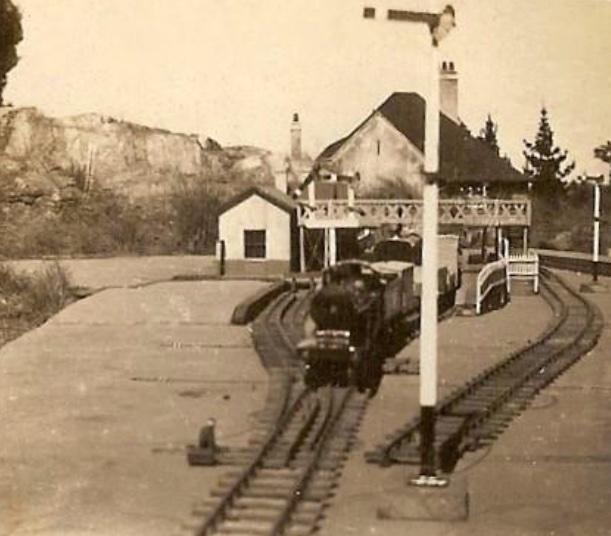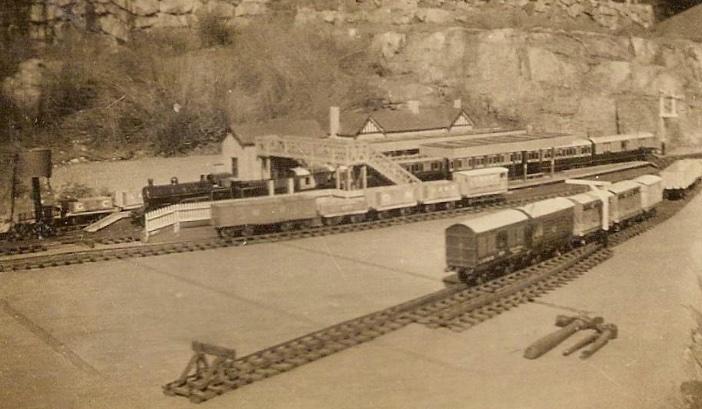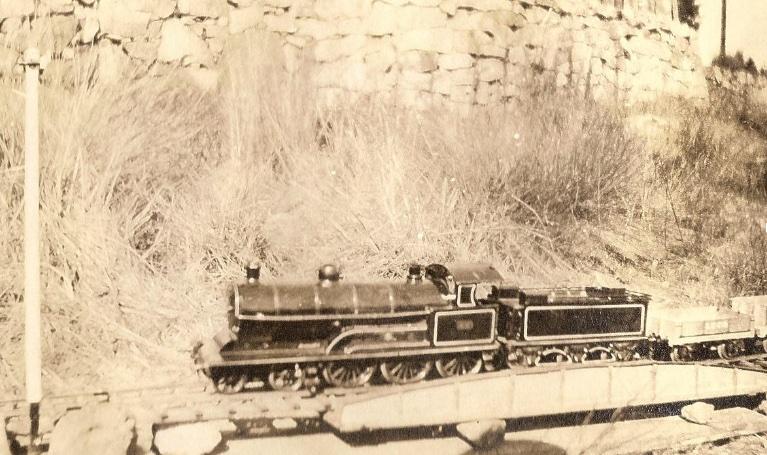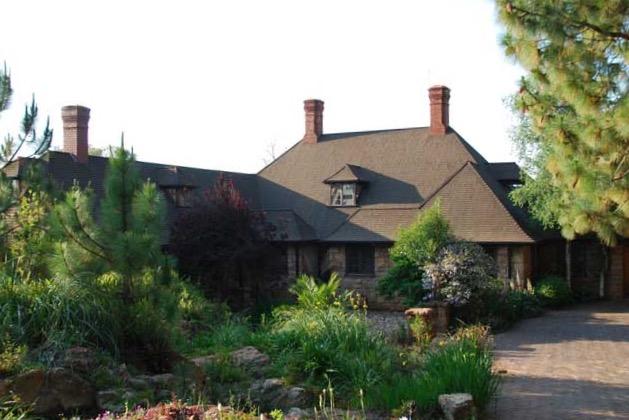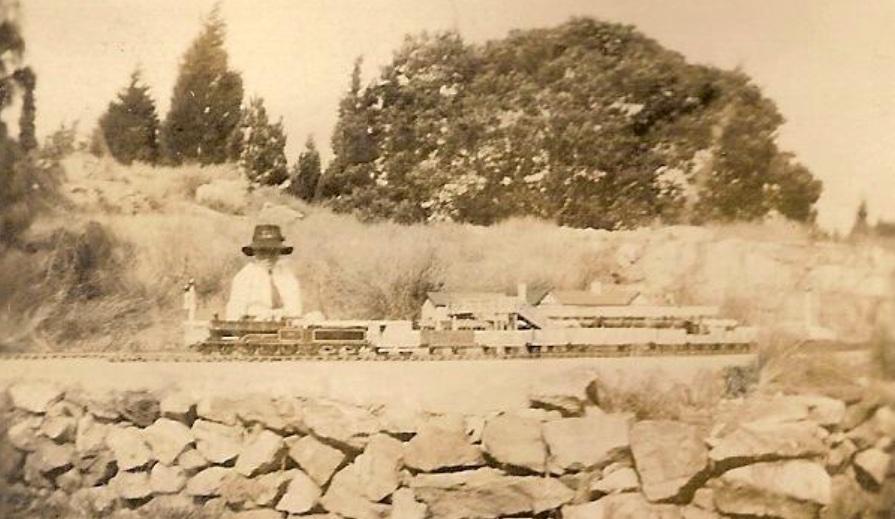
Disclaimer: Any views expressed by individuals and organisations are their own and do not in any way represent the views of The Heritage Portal. If you find any mistakes or historical inaccuracies, please contact the editor.
I have been looking for an ideal opportunity to share these pictures of a little known garden railway built by my wife’s great-grandfather, Arthur Nieman Smith. I’ve also managed to ask some of the remaining descendents what they could remember of the railway.
The caption in Kenneth Smith’s 1922 photo album reads: “Daddy’s Railway looking north”
View of the main railway station (see main image as well). Towards the right of the picture is a pair of tools, a hammer and a pair pliers to remove nails from horse shoes or from wood. (Kenneth Smith, August 1922)
It existed at a time in the 1920s when steam engines and horse drawn vehicles were the order of the day. King George V was on the throne, Jan Smuts Avenue was still gravel and the Union flag still flew over the recently completed Union Buildings in Pretoria. Photographs were extremely rare and printed small. Care would be taken before a picture was taken. They were expensive to produce.
London & North Western 4-6-0 Prince of Wales class. This model is possibly a Bassett-Lowke or Carson 2.5” gauge (Gauge 3). (Kenneth Smith, August 1922)
The railway was located in the garden of St Margaret’s, number 3 Rockridge Road, Parktown. This house and many of the houses in the street gained heritage status, on the 5th November of 1976 (notice number No. 2048). It was designed by the renowned architect Sir Herbert Baker. The railway was in the garden which which was later subdivided to create an office block (what a shame!).
Entrance to St Margarets (William Martinson via Artefacts)
Arthur built the structures from scratch, while bedridden with a back injury. The structures were built to a scale to fit the standard track sizes that would accommodate the model railway sets that could be bought commercially at that time. All the houses, platforms, advertisements (repurposed from canned food labels), wooden railings, fences etc. were made from pieces of wood that he fashioned. One of Arthur’s grandchildren, Robert Lamont Smith, fondly recalls having fun looking at the models. They were in Arthur's workshop above the servants quarters at St. Margaret’s which was “a Holy Palace” where little boys were not really welcome to go to. Only under duress were we permitted to “have a look - but not to touch!".
From this photo you can begin to appreciate the size of the models (Kenneth Smith, August 1922)
It is interesting to note that this set-up was in the garden. Another Grandchild Terry, would Recall that Douglas, who was a lot younger than Arthur, would often help his father lay the tracks out in the garden. That must have been a very special occasion.
The whole setup was sold at the execution of his estate. Unfortunately Douglas Lamont Smith who became fanatical about railways and had the hard task of setting up the railway never got any of it.
Click here to view the location of the railway.
Main image: The station building, platform canopy and pedestrian bridge (Kenneth Smith, August 1922)
Article originally written for the Hornby Railway Collectors Association of South Africa
References and further reading
- South African Heritage Resources Agency (click here to view St Margaret's listing)
- South African History online (click here to view St Margaret's listing)
- Artefacts (click here to view St Margaret's listing)
- Arthur Nieman’s Grand Children: John Smith, Marion Butler Robert Smith and Terry Smith
- Douglas Lamont Smith’s Daughter, Amanda Furber
- Photo Album of Kenneth Marcus Smith
Comments will load below. If for any reason none appear click here for some troubleshooting tips. If you would like to post a comment and need instructions click here.

